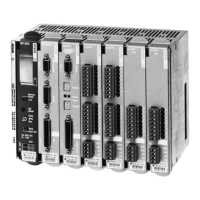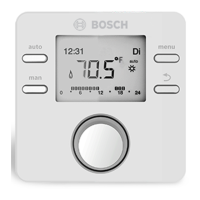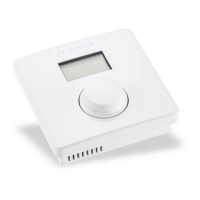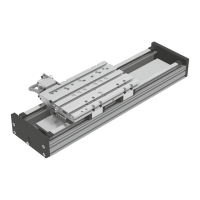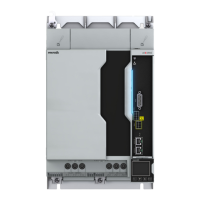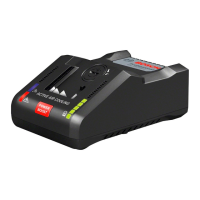6 720 820 871 (2016/12) CR 400 | CW 400 | CW 800
42 | FAQ
8 FAQ
Why do I have to set a set point value for the room
temperature even though the temperature is not
measured?
When you set a set point value for the room temperature you
change the heat curve. This also changes the room
temperature, because the temperature in the heating system
changes.
Why does the room temperature measured with a separate
thermometer not correlate with the displayed room
temperature?
The room temperature is influenced by a number of different
variables. If the user interface is installed on a cold wall, it will
be affected by the cold temperature of the wall. It will be
influenced by the heat from a fireplace or chimney, for
example, if it is installed in a warm part of the room. Therefore,
a separate thermometer can indicate a different room
temperature than that set at the user interface. To compare the
actual room temperature with the values measured by another
thermometer, the following is important:
• The separate thermometer and the user interface must be
physically close to each other.
• The separate thermometer must be accurate.
• When comparing, do not measure the room temperature
when the system is heating up, as the two appliances may
react at different speeds to the change in temperature.
If you have followed these instructions and you can still detect
a discrepancy, you can calibrate the room temperature display
(Æ page 35).
Why do the radiators get too hot with a high outdoor
temperature?
Even in summer mode radiators can heat up for a short period
in special circumstances, such as when the circulation pump
starts automatically at a certain interval to prevent it “jaming”
(blocking). If the circulation pump should by chance start
immediately after the heating up of hot water the residual heat
that is not used is moved away via the heating circuit and the
radiators.
Why does the pump run at night, even though the home is
not being heated at all or only very little?
This can be for various reasons. It depends which setting your
contractor has made for setback type.
• Reduced mode: to reach a low room temperature setting,
the pump continues to run even if the heating is reduced.
• Outside temperature threshold and Room temperature
threshold: the heating system is switched on automatically
if the measured temperature falls below the set value. The
pump will then also start.
• Frost protection: if the outside temperature falls below a
certain set point, the heating system runs to prevent the
system from freezing up.
The measured room temperature is higher than the
required room temperature. Why is the heat source
nevertheless running?
The heat source may be heating hot water.
Your system can be set to three different types of control
(Æ Chapter 2.3, page 4).
With weather-compensated control (including with room
temperature influence), the heat source can still operate even
if the measured room temperature is higher than the set room
temperature. Adjoining rooms are hence always sufficiently
heated without their own user interface.
Why does the heating not switch off even though the
outside temperature has reached the temperature
threshold set for summer shutdown?
Summer shutdown ( ) based on the outside temperature
takes the thermal inertia of the heated building mass into
account (damping due to building type). Therefore, when the
temperature is reached during the transitional period, it takes a
few hours before switchover actually occurs.

